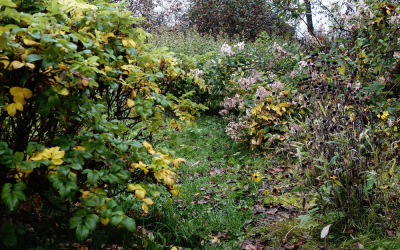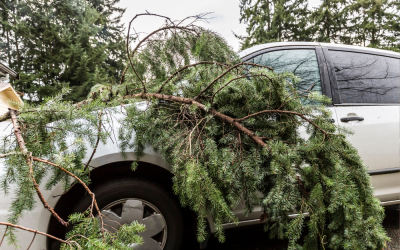So, you’ve got a tree on your property that looks a little worse for wear, or it blocks out of the sun, or it simply happens to be the way of your new patio – and it needs removing.
Luckily, you’ve wallpapered a room in your home before, so removing a tree from your garden must be a cinch? Right?
Well, a short search on YouTube will provide you with all the evidence why you should admit defeat and get a professional in for the tree removal instead.
The Dangers
While branches or twigs might not seem overly heavy, a mature oak tree that standards over twenty metres can weigh over 15 tonnes, and while it may take over 200 years to reach that height, it can fall and squash anything that happens to be beneath it.
Being a tree surgeon is one of the most dangerous jobs available in the UK. Many people believe a tree surgeon is a serene job that takes place in the countryside. In reality, however, the combination of working from a height, using a chainsaw and being struck by falling branches is enough to pose a serious risk to anyone who wishes to fell a tree.
According to the HSE, in the last ten years alone 24 tree surgeons have been killed performing tree work – and over 1,400 have suffered injuries – many of which have been career-ending and led to life-long disabilities.
Of course, the dangers don’t stop with the use of a chainsaw.
When the tree is felled, it is important to use extensive training and difficult techniques to make sure that the tree falls where the tree surgeon wants it to fall. We guarantee that the last thing you want to experience is for your house to be re-modelled against your will due to a felled tree crushing your roof.
The Training
A tree surgeon must train extensively before being granted a license to practice. The key qualifications needed are the following:
- Chainsaw Maintenance & Crosscutting (NPTC 0020-03, formerly CS30),
- Felling & Processing Trees Up To 380mm (NPTC 0020-04, formerly CS31),
- Tree Climbing & Aerial Rescue (NPTC 0020-13, formerly CS38)
- Aerial Cutting (NPTC 0021-08, formerly CS39).
- Aerial Tree Rigging (NPTC unit 309 – formerly CS41) (Voluntary)
- Safe Use of Woodchipper (NPTC Unit 222) (Voluntary)
Once training has been completed however, the real learning begins. Many young tree surgeons choose to start out with an apprenticeship under someone with much more experience to learn how to put their training into action. It can be many years, however, before a newly trained tree surgeon would be allowed to oversee a tree removal.
Many tree surgeons will also complete training as an arboricultural consultant, providing surveys, reports and advice to those who require them.
In Conclusion
Trees are beautiful, but if mis-treated can be deadly – especially if you try to cut one down without the required training. On average, 6 people are killed every year by falling branches alone, so why risk mortal injury to fell an entire tree?
Even those who successfully manage to fell a tree without killing themselves have overlooked another issue of removing trees – what do you do with the resulting timber? Surely if you’re planning on hiring a timber disposal firm, you might as well get them to cut the tree down as well?
When you hire a professional, they will always offer a service to dispose of any mess, branches, and sawdust from the worksite once they finish.
In short, tree surgery is extremely dangerous and should not be attempted by anyone without the necessary training, for both your safety, and the safety of those around you.
Are you in need of help with trees or hedges in your garden from a tree surgeon in Manchester with over 30 years experience? Elm House Tree Services are qualified specialists who offer competitive prices combined with reliable, friendly customer support.



